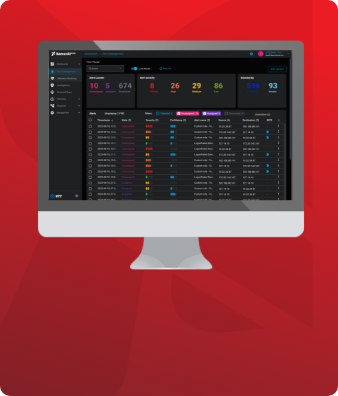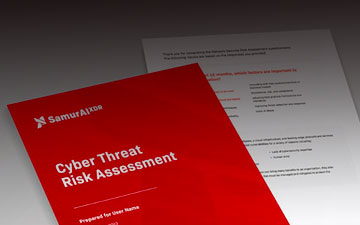Organizations of all sizes have valuable data resources that need to be protected. They are continuously under attack from a wide variety of techniques wielded by cybercriminals. As the sophistication of modern cyberattacks increases, it becomes harder for employees to identify them. This situation may result in successful attacks that put a company’s IT environment and data assets at risk.
An organization’s employees are often its last line of defense against cyberattacks. Blaming unwitting victims of a cyberattack is counterproductive and hurts morale. It also does nothing to prevent the next attack. Blaming and vilifying employees may have the opposite effect and make it less likely they will pay attention to attempts to provide cybersecurity education. An individual may feel that it’s pointless to try to prevent attacks if they will be blamed when one gets through and impacts the environment. Blame culture makes it more likely that staff will try to hide suspected breaches in an attempt to avoid attention.
A more enlightened approach to cybersecurity empowers employees with the education and tools they require to fight the sophisticated attacks that are prevalent today. Let’s look at why it is increasingly difficult to successfully identify cyberattacks and what can be done to provide a more secure IT environment that avoids the dangers presented by malicious threat actors.
How Cyberattacks have Evolved and Become Harder to Detect
Evolution is a constant in the world of cybersecurity. As security teams develop effective defensive techniques against threat actors, new types of attacks and delivery methods are created by cybercriminals. Data breaches are becoming more expensive, with the average worldwide cost averaging $4.35 million. Successful attacks can seriously damage a company’s finances and its ability to remain in business.
Following is a sampling of the ways cyberattacks and delivery methods have become more sophisticated, more dangerous, and harder to detect. First, we’ll look at two specific types of threats.
Ransomware
Ransomware is one of the most feared forms of malware that can infect an infrastructure. A successful ransomware attack encrypts important data and extorts the victim financially in exchange for the decryption keys. As companies developed better recovery capabilities to recover from an attack without paying the ransom, threat actors also modified their tactics. Cybercriminals now regularly also exfiltrate data and threaten to release it on the dark web if their ransom demands are not met.
**Advanced persistent threats **
An advanced persistent threat (APT) is a type of breach where an attacker gains access to and remains in an organization’s infrastructure. An APT typically moves stealthily through an environment to escape detection with traditional security measures. Its purpose may be to steal data or compromise credentials that can be used in further attacks. In some cases, the threat actors behind APTs are government-sponsored hackers or direct resources of nation-states. APTs can be extremely difficult to identify and remove from the IT environment.
Next, we’ll look at delivery methods. Cybercriminals attempt to gain access to a company’s IT environment in a majority of cyberattacks. While some of these attacks are made against vulnerabilities in hardware or software components, many target an organization’s vulnerable human element through a variety of techniques. Employees need to be trained to avoid falling victim to these threats.
Phishing
Phishing is essentially an attempt to trick a user into divulging important information or credentials that can be compromised and used to exploit an IT infrastructure. The following types of phishing attacks are carried out by threat actors.
- Email phishing employs a fake domain that mimics a legitimate organization that is then used to send multiple generic messages.
- Spear phishing uses the same tactics as email phishing but targets specific individuals.
- Whaling fine-tunes spear phishing by focusing the attacks on a company’s senior executives.
- Smishing involves sending fraudulent text messages to entice an unsuspecting recipient to click on a malicious link.
- Vishing is the use of a phone call in an attempt to obtain information from the victim.
Social media
Social media is increasingly being used to perpetrate attacks referred to as angler phishing. The goal is the same: to persuade individuals to download malware or provide the attackers with sensitive information. Tactics have evolved to use cloned websites, tweets, and posts to try and trick users. The information posted on social media sites becomes the raw material for targeted attacks that have a high probability of success.
Adding to the difficulty in identifying cyberattacks is the use of both corporate and personal platforms to launch them. The use of personal mobile devices to access company systems means that a successful attack on an employee’s smartphone can result in risks to the organization’s IT environment.
Blaming the Victims of a Security Breach is Typically Unproductive
Blaming the victim in the wake of a sophisticated cyberattack does not typically produce any productive results. A culture of finger-pointing and assigning blame does nothing to increase cybersecurity and in many ways is detrimental to morale and employee motivation.
Rather than blaming victims, organizations should focus their energy on providing the tools necessary to increase security awareness and guard against the sophisticated methods of threat actors. These steps will go a lot further in promoting cybersecurity than disparaging unsuspecting victims.
Tools to Increase Employee Security IQ
Raising the security IQ of everyone in an organization should be a top priority for company decision-makers. The following practices and tools can make a lasting difference in a company’s cybersecurity posture.
Training & Education - An educated workforce will be more adept at identifying all types of security risks. Education should include general security best practices such as using strong passwords and not sharing them with anyone. Employees should also be educated regarding the technology being used to provide cybersecurity so they understand the measures being taken to protect them and the company. Training is an essential component of a comprehensive cybersecurity strategy. Training material should be regularly updated to address the evolving tactics employed by threat actors.
An XDR solution - Extended detection and response is an approach to cybersecurity that brings together telemetry, threat intelligence, and alerts from across an organization’s infrastructure to help detect attacks that have circumvented other controls. An XDR solution can be instrumental in uncovering the weak signals that indicate the presence of a dangerous APT.
How an Effective XDR Solution Enhances Security
Implementing an effective XDR solution enhances security by consolidating signals from across the IT environment for more complete visibility into potential threats. XDR works on top of a company’s existing security foundation to provide help in detecting sophisticated threats. XDR helps to detect threats which may have bypassed other control measures.
Employees need to understand that the security monitoring and detection performed by the tool are not designed or being used to keep tabs on them. While the tool is adept at advanced detection techniques, its purpose is to proactively identify threats so they can be addressed by security personnel. This is beneficial to everyone in the organization.
Samurai XDR is an advanced XDR solution that can enhance the security of any size company. It is a cloud-based offering that promotes threat hunting to investigate and mitigate breaches. The solution is excellent at detecting threats before they affect the infrastructure.
Signing up for a 30 day free trial lets you see Samurai XDR in action. Talk to the experts at Samurai and learn how the addition of XDR will improve security and empower your employees.
Featured articles
Identity Management in the Physical and Digital Worlds
7 August 2024 | Webinars
In today's rapidly evolving world, managing identities securely and efficiently is more crucial than ever. Join us for an insightful...
Identity Management in the Physical and Digital Worlds
30 July 2024 | Webinars
In today's rapidly evolving world, managing identities securely and efficiently is more crucial than ever. Join us for an insightful...
XDR for Small and Medium Businesses: Is It Worth It?
24 July 2024 | XDR
Cybersecurity is of paramount importance to virtually all organizations and SMBs have to address several specific challenges. The failure to...





